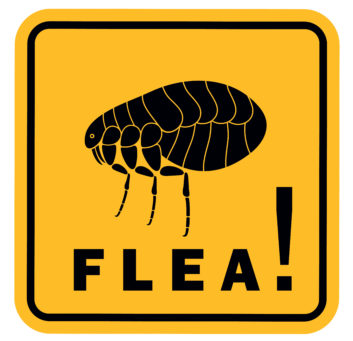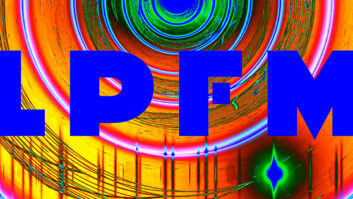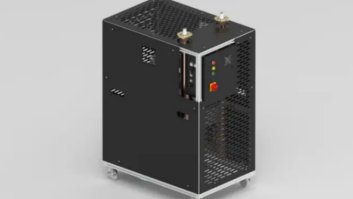
Let’s normalize post-sunset power levels on the AM band.
In the 1930s, AM radio stations began popping up everywhere. Many were granted 24-hour operation as there was little need to protect from nighttime skywaves in the beginning. As more and more stations were licensed, we added daytime-only licenses, which meant a station could operate during the day-only because the sky-wave generated at night could cause interference hundreds or even thousands of miles away to a 24-hour station.
Some stations could operate at night at reduced power, but the lower limit on a licensed station was generally 100 Watts, eventually lifted to 250 Watts for newer stations. Sometimes a multitower directional night pattern could allow operation at 250 Watts, but often, the nighttime plant was too expensive to build to be profitable and remain within budget.
Some daytime stations could not go on at night no matter what kind of directional array they contemplated because of the need for total protection to other stations. They remained at a severe disadvantage, as they would not come on air until as late as 8:15 a.m. local time in winter. After a lot of pressure, the FCC allowed pre-sunrise operation of up to 500 Watts starting at 6 a.m. and going until sunrise. But stations were still required to go off the air as soon as 4:15 p.m., a huge problem.
After more lobbying, the FCC came up with post-sunset authority (PSSA) and crunched the calculations for all daytime stations to grant night authorizations that would not create substantial skywave. The lucky stations were able to get power levels between 50 and 250 Watts, but others were given levels so low that the term “flea power” was adopted for stations allowed in some cases 5 Watts or fewer.
A classic flea power example would be WHFB(AM) of Benton Harbor, Mich.; because they operate 5 kW days they were only allowed 1.3 Watts overnight service to protect KYW in Philadelphia.
With commercially available transmitters going no lower than 250 Watts, engineers at the flea power stations had to come up with unique ways to get this level on the air. You younger engineers missed all the fun of trying to make that happen back in the ’80s when post-sunset was new and widespread. Many AM stations had to come up with “unique” and cheap ways to make it work.
Sure, you might laugh at an AM broadcast station running 1 Watt. But if that station’s tower is located in town, the 1 Watt broadcasts could be heard in at least a few neighborhoods.
IT’S COMPLICATED
However, to get 1 Watt on the air was no easy or cheap task. Most commercial transmitters at the time were tube units with fixed power. For instance, a 5 kW unit might be switchable to 1 kW or maybe down to .5 kW or 250 Watts but not lower. Attempts to lower output below the design limit of the transmitter would often result in very distorted audio and unstable performance. Engineers had to come up with ways to bleed off power and send the remainder to the tower.
The universal method was to make a divider that would send the more substantial portion of the RF to a dummy load, as much as 500+ Watts, and the remaining flea power would go to the tower. This required RF contactor switches, dummy loads that could take continuous operation, and interlocks to pause the high voltage when the divider is switched in. Often a more sensitive RF current meter needed to be switched in to provide a clear indication of line current.
To complicate matters even further, most stations were allowed to ramp the power down in half-hour intervals before hitting the tiny night output. An example would be a station running 1 kW days, 200 Watts at sunset, 85 Watts in the second half-hour and as low as 1.8 Watts in the second hour past sundown and then 1.3 Watts overnight. Some elaborate custom systems were designed to step the power down by shifting the ratio from the tower to the dummy load.
(I should also note that when trying to get the FCC authorization document for PSSA, which may have been lost over the years, you will find that the FCC only publishes the final night power. The ramp down levels noted in the letters are only available if you call or write the FCC Audio Division and make a request, but I have found they are happy to help.)
Some of us came up with an array of light bulbs to absorb power instead of a dummy, switching on more lamps in as the night went on. But as you can imagine, the impedance of such a system was not always predictable or stable.
Then came along LPB Corp. with a series of low-power AM type-accepted transmitters with variable outputs that ranged from the maximum output of 5 Watts to 100 Watts, and each could be dialed back to flea power as needed.
As the major transmitter manufacturers built more modern units, multiple power levels were built into the designs, with most units being able to achieve five or six discrete power levels often as low as 5 Watts. But even the modern units that could do 5 Watts could not easily be modified to do less.
Then, after a few years, LPB went out of business, and over time the flea-power LPB units failed, mostly due to inadequate cooling, and the cost to repair them was high — assuming the parts could be found.
MAKING DUE
All that to say: if a station was granted night authorization of less than 5 Watts and had a newer commercially made day transmitter, they might opt to just turn it down to the 5-Watt minimum and let it ride. Illegal? Technically, yes. But in reality, an FCC inspector would not cite you for this infraction, unless he had ice water in his veins.
But the rules are the rules.
I suggest that we standardize the flea power to a minimum of 5 or 10 Watts for AM nighttime. That way, stations don’t have to fudge or come up with complicated ways to drop to something like 1.3 W, which no currently available commercial type accepted transmitter (that I have found) can easily do.
I would hazard to guess that even the Class A lobby would not oppose my suggested change, as the night impact on skywave at 2 Watts is not damaged much by increasing to 5 or, maybe, even 10 Watts.
Also, standardizing the nighttime lower limit will make life a lot easier for stations that cannot maintain some of the Rube Goldberg systems that were designed to allow adequate power waste to achieve such a small output.
But we will have to wait and see.
Not every AM station has an FM translator, and some do still rely on flea power for night service. Let’s make it practical, uniform, and legal for all who bear ultra low output authorizations because they do the best they can to serve their area under less than ideal circumstances dictated by the laws of physics.
Langford is the owner of WGTO of Cassopolis, Mich., and W246DV of South Bend, Ind. He can be reached at [email protected].












